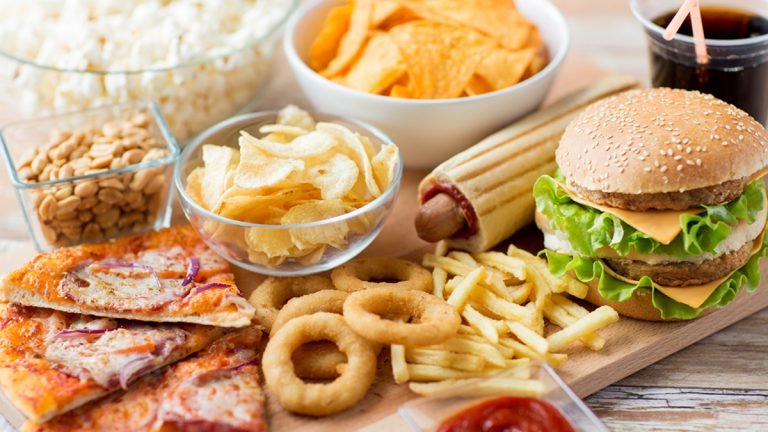Finding Joy In Cooking And Meal Planning As A Diabetic
#ez-toc-container {
background: #f9f9f9;
border: 1px solid #aaa;
border-radius: 4px;
-webkit-box-shadow: 0 1px 1px rgba(0, 0, 0, .05);
box-shadow: 0 1px 1px rgba(0, 0, 0, .05);
display: table;
margin-bottom: 1em;
padding: 10px 20px 10px 10px;
position: relative;
width: auto;
}
.ez-toc-container-direction {
direction: ltr;
}
.ez-toc-list-level-1 a{
font-weight:bold;
}
Table of Contents
1. Understanding Diabetes and Its Dietary Needs
Diabetes is a chronic health condition that affects millions of people worldwide. Understanding diabetes and its dietary needs is crucial for effective management and maintaining a healthy lifestyle. In this segment, we will provide an overview of diabetes and its impact on diet, emphasize the importance of meal planning in managing blood sugar levels, and dispel some common misconceptions about diabetes-friendly foods.
Overview of Diabetes and Its Impact on Diet
Diabetes is a condition characterized by high blood sugar levels, which arise from either insufficient insulin production or the body’s inability to effectively use the insulin it produces. There are two main types of diabetes: Type 1 and Type 2.
- Type 1 Diabetes: This type is often diagnosed in children and young adults and is caused by the body’s immune system attacking and destroying insulin-producing cells in the pancreas.
- Type 2 Diabetes: This is more common and generally occurs in adults. It involves both insulin resistance and inadequate insulin production.
The impact of diabetes on diet is significant, as the foods consumed directly influence blood sugar levels. Effective dietary management can help prevent or delay complications associated with diabetes, such as heart disease, kidney damage, and nerve damage.
Importance of Meal Planning in Managing Blood Sugar Levels
Meal planning is a cornerstone in the management of diabetes. Carefully selecting and timing meals can help maintain stable blood sugar levels and ensure nutrient balance. Below are key aspects of meal planning for individuals with diabetes:
- Carbohydrate Counting: Understanding the carbohydrate content of meals helps in adjusting insulin intake (for those who require it) and balancing blood sugar levels.
- Portion Control: Proper portion sizes can prevent extreme blood sugar fluctuations and assist in maintaining a healthy weight.
- Balanced Diet: Incorporating a variety of food groups, such as whole grains, lean proteins, healthy fats, fruits, and vegetables, ensures that the body receives essential nutrients.
- Regular Meal Times: Eating at consistent intervals prevents large blood sugar spikes and troughs throughout the day.
Working with a registered dietitian or certified diabetes educator can help personalize meal plans to fit an individual’s lifestyle, preferences, and medical needs.
Common Misconceptions About Diabetes-Friendly Foods
Despite general awareness about diabetes, various myths and misconceptions regarding diabetes-friendly foods persist:
- Misconception: People with diabetes need to avoid all sugar.
Truth: While it’s essential to limit added sugars, people with diabetes can still enjoy foods with natural sugars, like fruits, in moderation as part of a balanced meal plan.
- Misconception: Only ‘diabetes-friendly’ labeled foods are safe.
Truth: Many products labeled ‘diabetes-friendly’ or ‘sugar-free’ may still contain carbohydrates and unhealthy fats that affect blood sugar levels. It’s crucial to read nutritional labels comprehensively.
- Misconception: Carbohydrates are entirely off-limits.
Truth: Carbohydrates are an essential part of a healthy diet. The focus should be on consuming healthy sources such as whole grains, vegetables, and legumes, and monitoring total intake.
- Misconception: People with diabetes shouldn’t eat fruits.
Truth: Fruits contain vital vitamins and minerals and can be included in a diabetes-friendly diet in appropriate portions. Fresh, whole fruits are typically preferable to fruit juices or dried fruits, which can spike blood sugar levels.
Understanding these truths can help individuals with diabetes make informed dietary choices that promote better health and blood sugar control.
In conclusion, managing diabetes effectively requires a robust understanding of how diet impacts blood sugar levels and the importance of structured meal planning. By dismissing common misconceptions and focusing on practical dietary strategies, individuals with diabetes can enjoy a balanced, fulfilling diet and achieve better health outcomes.

2. Embracing the Joy of Cooking as a Diabetic
Embracing the joy of cooking can transform the life of someone managing diabetes. Through a blend of innovation, exploration, and testimony, individuals can discover a renewed sense of enthusiasm in the kitchen. Cooking as a diabetic involves learning new techniques and recipes that not only accommodate dietary needs but also deliver exceptional flavor and satisfaction.
-
Discovering New Cooking Techniques and Recipes Tailored for Diabetics
Cooking for diabetes doesn’t mean sacrificing flavor or creativity. By embracing different cooking methods, you can create delicious dishes that cater to your nutritional needs.
- Low Carb Cooking: Focus on creating meals with minimal carbohydrates to maintain stable blood sugar levels. Try replacing traditional pasta with zucchini noodles or using cauliflower as a substitute for rice.
- Portion Control: Learn to measure and manage the portions on your plate. Implementing devices like measuring cups or even just visually dividing your plate can ensure balanced meals.
- Batch Cooking: Preparing meals in advance can help you maintain control over ingredients and portion sizes. Freezing small batches ensures that you always have healthy options available.
-
Exploring the Health Benefits of Home-Cooked Meals
Cooking at home offers significant health advantages, particularly for those managing diabetes. When you cook your meals, you have complete control over the ingredients.
- Quality Ingredients: Home cooking allows you to source and select the best-quality ingredients, ensuring freshness and nutritional value.
- Reduction in Processed Foods: By cooking from scratch, you naturally reduce the intake of processed foods, which are often high in unhealthy fats, sugars, and sodium.
- Personalized Meals: You can tailor meals to your personal taste preferences and dietary requirements without the hidden ingredients found in restaurant dishes.
-
Testimonials and Stories from Diabetics Who Found Joy in Cooking
Discover inspiration from those who have turned a dietary restriction into a passionate pursuit.
- Michael’s Story: After being diagnosed with Type 2 Diabetes, Michael found solace and enjoyment in cooking. He says, “Cooking has become my therapy. I’ve learned to transform traditional recipes into diabetic-friendly versions that the whole family loves.”
- Linda’s Journey: Linda shares her experience of incorporating cooking into her life as a newfound joy. “I never knew how fulfilling cooking could be. Experimenting with spices and fresh ingredients has been a revelation.”
- Raj’s Transformation: For Raj, cooking became a way to reconnect with his cultural roots. “I started recreating my favorite Indian dishes with a healthy twist. Cooking has not only improved my health but also my connection to my heritage.”
By embracing the joy of cooking, diabetics can enjoy nutritious meals while exploring an exciting and fulfilling hobby. Discovering new cooking techniques and learning the health benefits of home-cooked meals are just steps along the journey. Through shared stories and personal experiences, many find that cooking transforms from a chore into a creative outlet and a source of empowerment.

3. Effective Meal Planning Strategies
Meal planning is an essential strategy for maintaining a balanced diet and ensuring that you consume nutrient-rich meals. It helps in streamlining grocery shopping, reducing food waste, and saving both time and money. Here, we delve into effective meal planning strategies that focus on creating balanced meals, utilizing seasonal ingredients, and incorporating technology to simplify the process.
Tips for Creating Balanced and Nutrient-Rich Meal Plans
Creating a meal plan that is both balanced and rich in nutrients involves understanding the core elements of nutrition and how to combine them effectively. Here are some key strategies:
- Prioritize Whole Foods: Focus on incorporating whole foods, such as fruits, vegetables, lean proteins, whole grains, and healthy fats, into your meal plan. These foods are typically high in nutrients and low in processed sugars and fats.
- Balance Macronutrients: Ensure that each meal contains a balance of macronutrients – carbohydrates, proteins, and fats. For example, aim to have a rich protein source, a healthy fat, and a complex carbohydrate in every meal.
- Consider Portion Sizes: Understand portion sizes to prevent overeating and ensure you’re consuming adequate nutrients without excess calories. Visual cues, like using your hand to measure portions, can be effective.
- Include a Variety of Foods: Rotating different foods ensures you get a wide array of nutrients and prevents meal fatigue. This is crucial for nutrient diversity and preventing deficiencies.
- Plan for Snacks: Healthy snacks like nuts, fruits, or yogurt can sustain energy levels throughout the day and prevent unhealthy eating impulses.
How to Incorporate Seasonal and Fresh Ingredients
Incorporating seasonal and fresh ingredients enhances the flavor and nutritional value of meals. Here’s how to do it effectively:
- Visit Local Farmer’s Markets: Farmer’s markets provide fresh produce that’s in season, often harvested at peak ripeness and abundant in nutrients.
- Check Seasonal Produce Guides: Use a seasonal produce guide to understand which fruits and vegetables are in season and tailor your meal plan around these ingredients for enhanced freshness and taste.
- Preserve Seasonal Foods: Freezing or canning seasonal fruits and vegetables can allow you to enjoy them throughout the year. This ensures variety and access to nutrient-rich foods regardless of season.
- Experiment with Recipes: Incorporate new recipes that focus on seasonal ingredients, which can help you explore different flavors and cuisines while maintaining a balanced diet.
Utilizing Technology and Apps to Simplify Meal Planning
In today’s digital age, various technologies and apps can assist in making meal planning more efficient and less time-consuming. Below are some ways to leverage these tools:
- Recipe Management Apps: Apps like Paprika or Pepperplate help store and categorize recipes, making it simple to plan meals according to dietary needs and available ingredients.
- Grocery List Apps: Use apps such as AnyList or Out of Milk for creating and managing grocery lists. Many of these apps allow you to organize items by category or store layout, which saves time during shopping.
- Meal Planning Apps: Platforms like Mealime and Eat This Much can create custom meal plans based on dietary preferences and nutritional goals. They simplify meal prep and ensure adherence to balanced eating.
- Nutrient Tracking Tools: Apps like MyFitnessPal and Cronometer help track nutrient intake and ensure that your meals are meeting your daily nutritional requirements.
- Use Smart Kitchen Devices: Consider integrating smart kitchen devices that pair with apps to suggest meal options based on available ingredients or monitor cooking processes for optimum results.
To summarize, effective meal planning involves striking a balance between nutrition and convenience. By prioritizing whole foods, understanding macronutrients, using seasonal produce, and leveraging technology, you can create meal plans that are not only nutrient-rich but also exciting and varied. Such an approach not only elevates your culinary experience but also significantly contributes to overall health and well-being.
4. Stocking a Diabetic
Managing diabetes involves making thoughtful choices about nutrition and cooking methods. Stocking a diabetic-friendly kitchen is essential to making meals that are both delicious and conducive to maintaining stable blood sugar levels. In this guide, we’ll delve into essential pantry staples and tools for diabetic cooking, detail how to shop smartly for diabetic-friendly ingredients, and provide meal prepping tips that save time and boost health.
Essential Pantry Staples and Tools for Diabetic Cooking
Creating a diabetic-friendly kitchen starts with having the right essentials on hand. Here are some must-have pantry staples and tools:
- Whole Grains:
- Quinoa
- Brown rice
- Whole grain oats
- Whole wheat pasta
- Legumes and Beans:
- Lentils
- Chickpeas
- Black beans
- Kidney beans
- Nuts and Seeds:
- Almonds
- Chia seeds
- Flaxseeds
- Walnuts
- Healthy Oils:
- Olive oil
- Avocado oil
- Coconut oil (in moderation)
- Herbs and Spices:
- Cinnamon
- Turmeric
- Ginger
- Garlic powder
- Sweeteners:
- Stevia
- Monk fruit sweetener
- Erythritol
- Useful Kitchen Tools:
- Food processor
- Blender
- Slow cooker
- Non-stick cookware
How to Shop Smartly for Diabetic-Friendly Ingredients
Shopping for diabetic-friendly ingredients doesn’t have to be daunting. Here’s how you can fill your cart with the best options while staying within budget:
- Plan Ahead: Create a weekly meal plan and list all the necessary ingredients. This prevents impulse buying and ensures you stick to healthier options.
- Read Labels: Always check the nutritional information on packaged foods. Look for low-sugar, high-fiber, and whole-grain products.
- Buy in Bulk: Purchase items like grains and beans in bulk to save money and ensure you have plenty of healthy options at hand.
- Visit the Perimeter: Focus your shopping efforts on the store perimeter where fresh produce, lean proteins, and dairy are usually located.
- Choose Fresh or Frozen: Pick fresh fruits and vegetables where possible, or opt for frozen options without added sugars or sauces.
- Opt for Store Brands: Often cheaper than name brands, store-brand options can help you save money on diabetic-friendly staples.
Meal Prepping Tips to Save Time and Boost Health
Meal prepping is a fantastic way to maintain a nutritious diet while managing diabetes. Here’s how you can effectively meal prep:
- Select a Meal Prep Day: Dedicate a specific day of the week to plan and prepare your meals. Having a set day makes it easier to stick to the routine.
- Invest in Containers: Purchase a variety of containers to store your prepped meals in portions. Opt for BPA-free plastic or glass containers for better health.
- Batch Cook: Prepare large batches of grains, lean proteins, and vegetables. Portion them out for the week to mix and match meals with ease.
- Pre-Chop Vegetables: Chop vegetables like peppers, carrots, and broccoli ahead of time to quickly add to recipes or salads.
- Prepare Overnight Oats: Combine oats with your choice of milk and toppings, then refrigerate overnight for a quick and nutritious breakfast.
- Freeze for Later: Make soups, stews, or casseroles in large quantities and freeze them for easy meals later on.
- Spice It Up: Keep a variety of herbs and spices to add flavor without extra calories or sugar.
By stocking your pantry with wholesome staples, shopping smartly, and efficiently prepping meals, you create a diabetic-friendly kitchen that supports healthful eating habits. This strategic approach saves time and ensures you always have access to nutritious options, making diabetes management much more manageable.







